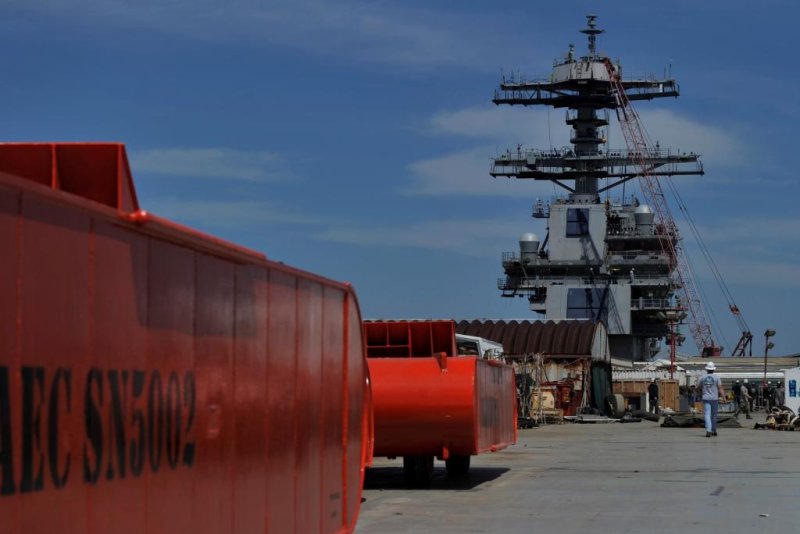The Electromagnetic Aircraft Launch System is slated to replace existing catapult systems currently used by U.S. Navy aircraft carriers. Pictured: Weighted sleds sit on the flight deck of U.S. aircraft carrier Gerald R. Ford in preparation for Electromagnetic Aircraft Launching System testing. U.S. Navy photo by Petty Officer 3rd Class Aidan Campbell
Jan. 30 (UPI) -- General Atomics has received a $532.6 million contract modification to manufacture an additional Electromagnetic Aircraft Launch System for the U.S. Navy.
The modification includes manufacturing, assembly, inspection, testing, and checkout duties for the Electromagnetic Aircraft Launch System to be used by the aircraft carrier USS Enterprise. The contract also covers installation tasks, spares and repairs.
Work on the contract will be performed at a variety of locations including San Diego, Calif.; Mankato, Minn.; Tupelo, Miss.; Cincinnati, Ohio, and others. The U.S. Department of Defense expects the work to be complete by September 2027.
General Atomics received $11 million in funding at the time of the modification award. The Naval Air Systems Command in Patuxent River, Md., is listed as the contracting activity.
Electromagnetic Aircraft Launch System, or EMALS, is a device being developed by General Atomics to replace existing catapult systems used by U.S. aircraft carriers. The system has already been installed on the Navy's USS Gerald R. Ford, with John F. Kennedy scheduled to be the second vessel to receive the upgrade.
EMALS is designed to improve upon current launch systems by reducing manning and life-cycle cost, installed volume, topside weight, and thermal signatures. General Atomics says the systems also increase launch operational ability for both manned and unmanned aircraft.















